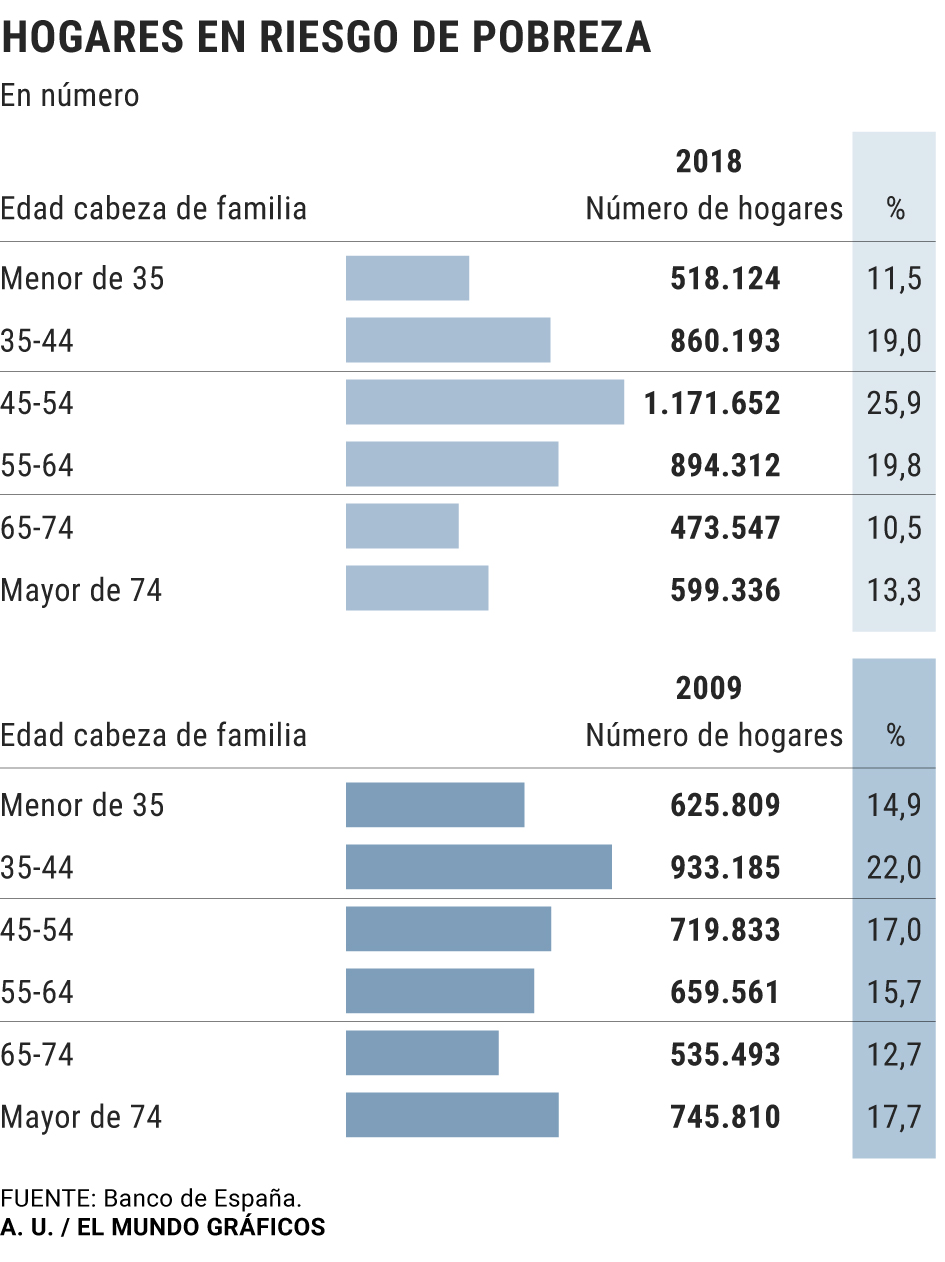- According to the Bank of Spain, the only unharmed from the crisis: the average income of retirees is today higher than before the recession
A good part of the Spanish population still suffers the consequences of the economic crisis, something that can be observed in variables such as the unemployment rate or the purchasing capacity but, probably, there is no better way to verify that according to the following data: today , there are a greater number of households at risk of poverty than in 2009, and this situation is especially complex in those whose head of household is between 45 and 64 years old .
The analytical article The population at risk of poverty or social exclusion in Spain , which this Thursday published the Bank of Spain, shows that at the beginning of the crisis the number of households in this situation was 4.2 million, while now the data amounts to 4.5 million, according to the latest survey of living conditions (CVD). If the total number of people is observed, the result is that there has been an increase of more than 700,000 citizens .
This increase contrasts with the reduction that, although slight, has occurred between those under 44 and retirees, which means that the increase in households between 45 and 64 has had to be even more pronounced. And, indeed, going to these age groups, it is observed that in the 45 to 54 year period the rebound has been more than 450,000 homes, while in the range of 55 to 64 years the increase exceeds 230,000. In total, 685,000 more homes than before the crisis began .
The figure is even more devastating if one takes into account that at these ages people are fully active, that they are the years in which their income should be higher after accumulating years of experience and knowledge, and that especially those citizens would have to Be able to save for retirement. However, the work of the Bank of Spain, which has taken the criterion of risk of poverty used by the European Council for its analysis, shows a substantially different situation and also indicates that in many of these households the heads of household present a medium or even high level of training. Thus, in almost half of the cases the reference person completed High School and 15% have a university degree.
With all this, the number of homes at risk of exclusion adds up to the indicated 4.5 million, which represent 24.4% of them. Or in other words, that one in four households in Spain is at risk of poverty . «The expansive phase in which the Spanish economy is immersed since 2013 has allowed reducing the percentage of households at risk of poverty, although this percentage is above the pre-crisis records and the objective defined for Spain in 2010 in the Strategy European 2020 », explains the body led by Pablo Hernández de Cos in his conclusions.
According to the criteria of The Trust Project
Know more- Crisis
BrusselsThe Commission improves its growth forecast for Spain by one tenth and equals 1.6% of the Government
In 2019 Public debt exceeded one billion euros for the sixth consecutive year
TaxationCatalonia threatens to raise taxes despite being the CCAA with more taxes and the one that punishes the middle class the most

